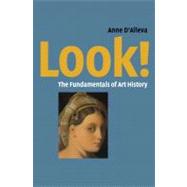
| (Note:Each chapter ends with a Conclusion.) | |
| Introduction: How to Use this Book | |
| Introducing Art History | |
| What do Art Historians Do: The Object of Art History | |
| Art History's Disciplinary Identity | |
| Why is Art History Important? | |
| The Fundamentals of Interpretation: Formal and Contextual Analysis | |
| Two Sides of a Coin: Formal and Contextual Analysis | |
| Everyday Art History: Looking at Advertising | |
| Formal Analysis | |
| Contextual Analysis | |
| Art Out of Context? Museums and Art History | |
| The Process of Interpretation: Confronting your Assumptions | |
| Writing Art History Papers | |
| Structuring Art Historical Arguments: Interpretation vs. Opinion | |
| Formal Analysis Papers | |
| Research Papers | |
| Some Specialized Kinds of Writing Assignments | |
| Resources for Art Historical Research | |
| Critical Moments in Art-History Writing | |
| Citations and Bibliographies | |
| Writing Style | |
| Navigating Art History Examinations | |
| Slide Identifications and Short-Answer Questions | |
| Art History Essays | |
| Effective Note-Taking | |
| Art History's Own History | |
| Ancient “Art Historians” | |
| Medieval Art History | |
| Renaissance Art History | |
| Art History and Criticism in the Age of Enlightenment | |
| Foundations of Modern Art History: Nineteenth-century Philosophers and Historians of Art | |
| Art History at Mid-century Formalists, Iconographers, and Social Historians | |
| The “New” Art History and the Future of Art History | |
| Do Other Cultures Practice Art History? Glossary | |
| Annotated Bibliography | |
| Table of Parallel Illustrations in Art History Surveys | |
| Picture Credits | |
| Index | |
| Table of Contents provided by Publisher. All Rights Reserved. |
The New copy of this book will include any supplemental materials advertised. Please check the title of the book to determine if it should include any access cards, study guides, lab manuals, CDs, etc.
The Used, Rental and eBook copies of this book are not guaranteed to include any supplemental materials. Typically, only the book itself is included. This is true even if the title states it includes any access cards, study guides, lab manuals, CDs, etc.